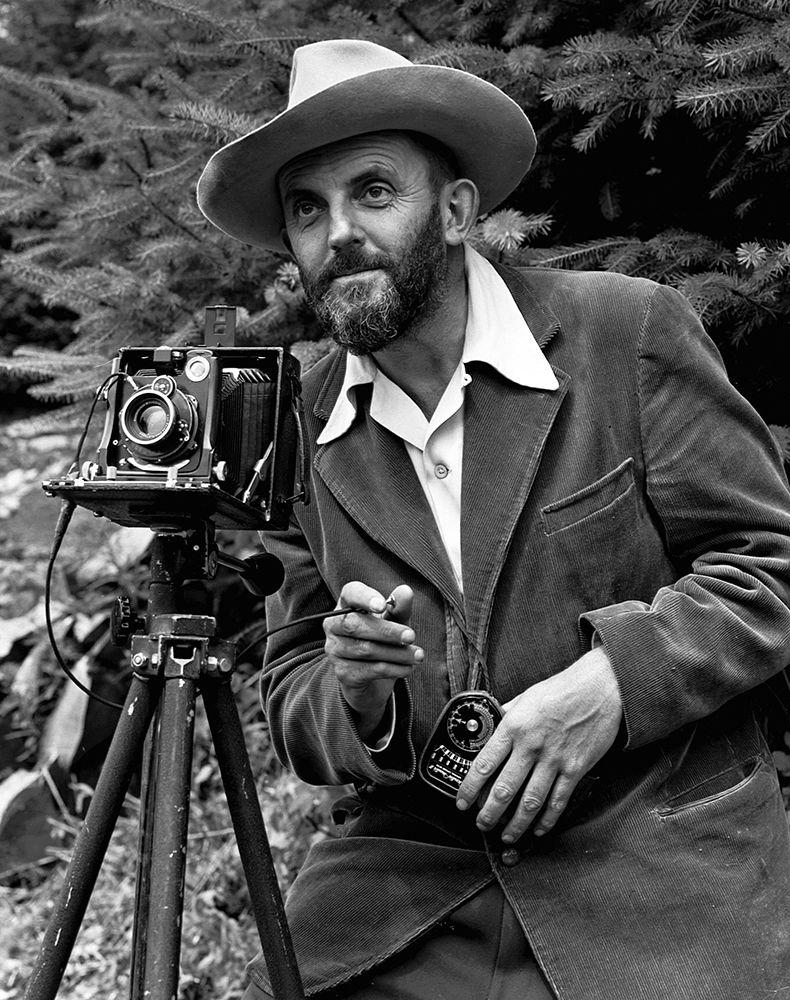As last year marked the centennial anniversary of the National Park Service, quite a few Americans have been especially mindful lately of the incredible, natural beauty in this country. Serendipitously, the North Carolina Museum of Art chose February through May of this year to display a collection of work by Ansel Adams, a renowned nature photographer who had a particular love for the natural splendor of American parks, particularly Yosemite.
The exhibit primarily comprises photographs of the natural world, but while Adams’ greatest affinity was for nature photography, the exhibit also includes an assortment of portraits. Adams’ career spanned five decades, and the photographs included in this collection, which are largely drawn from a portfolio that Adams himself assembled to represent his life’s work, are from the 1920s to the 1960s. Despite their age, the photos are still relevant to connoisseurs, photographers and the public today.
“He really has had an incredible impact on photography,” said Linda Dougherty, chief curator of the North Carolina Museum of Art.
“If you think about the works in the show, they’re from the 1920s through the 1960s, and if you look at them 50 to 60 years later, I think his work still has an impact, they’re timeless … they’re going to relate to people here and now,” Dougherty said.
The murmuring crowds that have perused the exhibit over the last few weeks are as broad as the span of years represented by the photographs that patrons admired.
“This exhibition has brought in a fairly broad audience, both younger college students and older visitors who are quite familiar with Ansel Adams’ work over time,” Dougherty said.
One notable aspect of this exhibit is that it was chosen as a pilot for a new program that the museum is exploring, a selection of classes to complement special exhibitions.
“We have this ongoing online course, and we’ll see, based on the response to this, if we’d like to try it with another show,” Dougherty said.
Shannon Johnstone, associate professor of art at Meredith College, facilitates the course titled “The Photography of Ansel Adams through a Contemporary Lens.” The course is self-paced and incorporates reflection, discussion of Adams’ work and practice of technique. Additionally, the course encourages students to reflect critically on how Adams may have been limited by his context and how artists today may need to consider themselves or their work differently than Adams considered his.
Adams famously said, “A true photograph need not be explained, nor can it be contained in words,” but Johnstone disagrees.
“He’s a man of his times, for sure, and the idea that you would have an artist state or explain what the work was about was not accepted at that time,” Johnstone said. “Especially at an all-women’s college, where we want women to be able to speak for themselves, and explain what they’re doing and not have someone else pin those ideas on them, I felt like it was a really important course to be involved with to be part of that discussion.”
Despite his reticence regarding his work, Johnstone emphasized his profound contributions to photography.
“[Adams] was one of the first artists that really allowed photography, as it was, to be considered an art form,” Johnstone said.
Anyone interested in taking the course may still do so through May 21. Fees are $25 for members and $35 for nonmembers.
Experts in the field consider Adams to be one of the most influential photographers to have lived and worked, and the public continues to find his work moving years after his death in 1984.
“I could sit there for hours on end and enjoy his pictures,” said Rosemary Pruneau, a freshman studying microbiology. “I was impressed by the gelatin prints which gave the pieces a three-dimensional effect.”
Beyond having an incredible eye for a beautiful scene or moment, Adams had great skill in creating his photographs on the technical level.
“He was an absolute master of his technique,” Johnstone said.
She then went on to explain that Adams established a systematic approach to quantifying the quality of a print based on the tones of gray that it contained, adding a layer of technical rigor to photography that can be difficult to incorporate.
The exhibit will be running through May 7. Tickets are $18 for adults 19 and older, but college students receive free admission on Friday nights from 5-9 p.m. Additionally, tickets to this exhibit include entrance to the other special exhibition currently running at the North Carolina Museum of Art, “Glory of Venice: Renaissance Paintings 1470-1520.”To maximize a visit, Dougherty recommends attending a lecture at the museum and getting a tour or watching video interviews with Adams online, to provide contextual information and a deeper understanding of Adams’ incredible lifetime of work.
A version of this article appeared in print on April 6, 2017 on page 10 with the headline: “Ansel Adams exhibit entices.”
The North Carolina Museum of Art is currently hosting “Ansel Adams: Masterworks,” an exhibition that features 48 photographs by Ansel Adams. The ticketed event runs through May 7, with free admission for college students Friday nights from 5 to 9 p.m.














